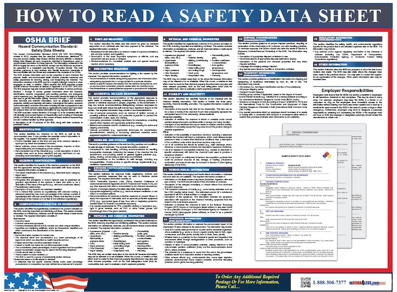 Cleanzine: your weekly cleaning and hygiene industry newsletter 11th April 2024 Issue no. 1109
Cleanzine: your weekly cleaning and hygiene industry newsletter 11th April 2024 Issue no. 1109
Your industry news - first
The original and best - for over 20 years!
We strongly recommend viewing Cleanzine full size in your web browser. Click our masthead above to visit our website version.
FAQs about the SDS
 As most cleaning professionals around the world know, the old Material Safety Data Sheet has been replaced by the new Safety Data Sheet. In the process, numerous questions have come up as to why the old MSDS was replaced along with enquiries specifically about the new SDS forms.
As most cleaning professionals around the world know, the old Material Safety Data Sheet has been replaced by the new Safety Data Sheet. In the process, numerous questions have come up as to why the old MSDS was replaced along with enquiries specifically about the new SDS forms.
To help us figure things out, Tobi Colbert, business development manager for National Service Alliance, a leading group purchasing organisation for contract cleaners in North America, lists some of the most frequently asked questions and their answers below:
Why the change?
The SDS is designed to make information on chemicals, product labels, and warning labels consistent around the world, whether the cleaning worker is in India or North America, for example.
Are SDS's on every cleaning solution?
Any product classified as 'potentially hazardous' and intended for use, handling, or storage in a workplace setting, will be likely to have an SDS.
What information is on the SDS?
There are 16 sections, but the following tend to be the most important: Identifying the manufacturer; hazard classification; ingredient information; first aid measures if needed; fire extinguishing measures if needed; personal precautions when using the product; handling and storage; and physical properties about the product - such as the temperature at which it could catch fire.
Does the new SDS look different from the old MSDS?
Yes, and one of the key differences is there are lots of pictograms designed to convey messages and replace words.
When are SDSs updated?
They are required to be updated whenever a manufacturer becomes aware of 'significant new data' about its product; for instance, if the ingredients have changed.
How will I know if it is updated?
A 'revised date' will be on the SDS.
Are cleaning contractors required to provide SDS information?
Yes. It may be in hard copy or readily accessible by a Web-enabled device.
As a cleaning worker, when would I use an SDS?
Before working with any new cleaning solution; be sure the SDS matches the name of the product, review the hazards, understand the safe handling and storage procedures, and know what to do in an emergency.
The NSA is a buying group serving the professional contract cleaning industry. Starting with 19 members, it now has nearly 70 contract cleaner members - most of which are leading names in the professional cleaning industry - as well as those from other service industries such as security and plumbing. Total membership is now nearly 300. Terry Sambrowski is the NSA executive director.
E: [email protected]
W: www.nansa.org
21st April 2016







